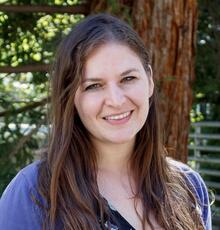
Talk Title and Abstract:
Preparing for Deep Galaxy Surveys Using Mock Galaxy Catalogs
A major event in cosmic history is the epoch of reionization (EoR), in which neutral hydrogen became re-ionized. This process appears to have occurred between redshifts 6-10, and is likely due to ultraviolet radiation from the earliest galaxies. However, data at these high redshifts is limited, and there are still many questions about the EoR, such as whether there are enough galaxies to account for the amount of UV radiation required, the precise timeline, and the topology of reionization. Our understanding of this epoch in the universe's history will be revolutionized by deep galaxy surveys with upcoming telescopes JWST and Roman. While these telescopes will provide extraordinary datasets, the creation of realistic mock catalogs are crucial to optimize their design, understand systematics, and develop analysis tools. In this talk, I will present a mock galaxy catalog that produces realistic galaxy populations to redshifts z>10 and galaxy masses M> 105 M☉, as well as preliminary predictions for the science returns of an ultra deep field with Roman Space Telescope.
Would you like to join this Zoom seminar? Please email Donna Hayes.